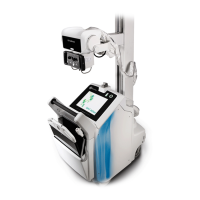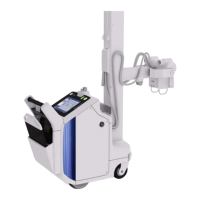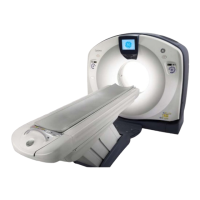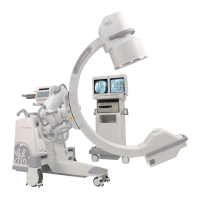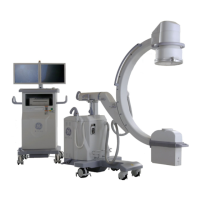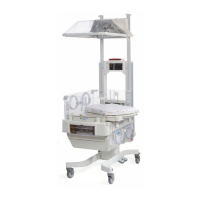Chapter 15: Preferences
5495975-1EN Rev.9 15-52
© 2013-2017 General Electric Company. All rights reserved.
7. Select the Image Type (some systems may only have Standard image type available).
8. Select the Patient Size. Available options are: Small Adult, Medium Adult, Large Adult, Small Pediatric,
Medium Pediatric, or Large Pediatric.
9. Select the Look. Choose the first “Undefined” Custom look.
Note: If a Factory Look is selected, parameters are read-only. Only Custom processing looks can be
changed.
10. Enter new name in Look Description to rename the look:
The system will not accept a new look if the name remains “Undefined.”
11. Check the Make Default box to set this look at the default for the selected Anatomy.
12. Adjust parameters as described in Table 15-10. Parameters may be adjusted in any order.
Table 15-10 Image Processing parameters
Parameter Definition
Contrast Adjust Adjusts image contrast. Also known as window width.
Move the slider right for more contrast (towards pure black and white).
Move the slider left for less contrast (towards uniform gray).
Range: 25% – 400% with increment of 1%
Brightness
Adjust
Adjusts image brightness from 25-210%. Also known as window level.
Move the slider right for a lighter image.
Move the slider left for a darker image.
Note: Brightness Adjust and Contrast Adjust should not be used for per-image tun-
ing/correction of brightness and contrast. They are used to modify the
default look of images from a particular exam. For example, if images from a
particular type of exam are appearing consistently lighter than they should
be, the Brightness Adjust slider can be moved left to adjust. However, for
small alterations of brightness on a particular image, use the Brightness and
Contrast controls in the Image Viewer screen.
Tissue Contrast Controls the general contrast between the thick and thin anatomy.
Move the slider right to decrease bone/soft-tissue contrast.
Move the slider left to increase bone/soft-tissue contrast.
Range: –0.15 to 0.15 with 0.01 increments.
Note: Unlike Tissue Equalization, which controls contrast within under-penetrated
(thick) or over-penetrated (thin) areas, Tissue Contrast controls the general
contrast between the thick and thin anatomy. For example, Tissue Contrast
can be used in combination with Tissue Equalization to define a Chest PA
look that is equalized in the lung fields, but with light spine/ribs.
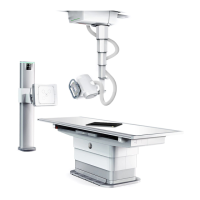
